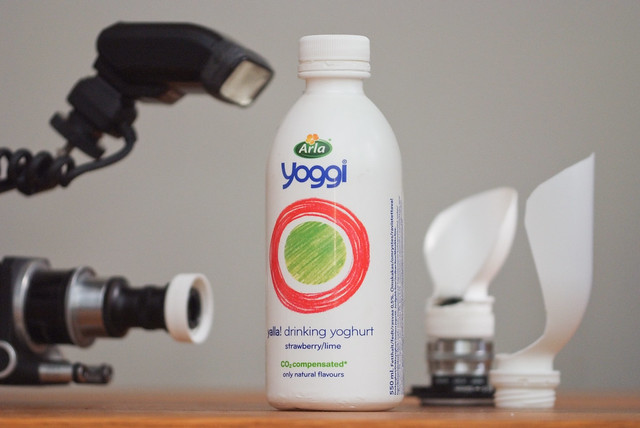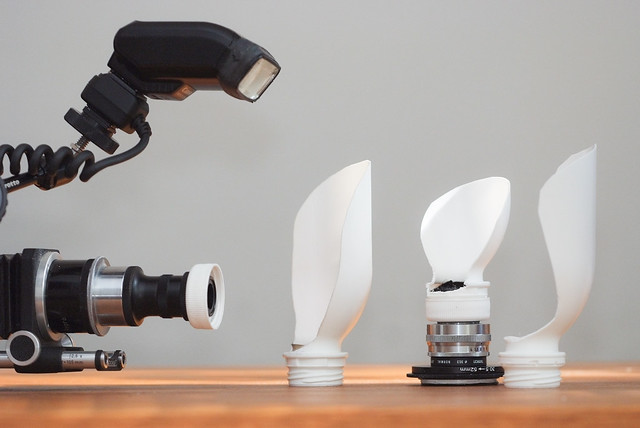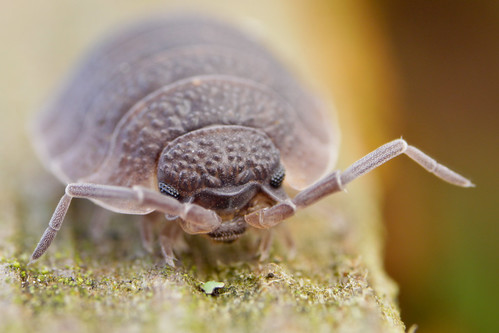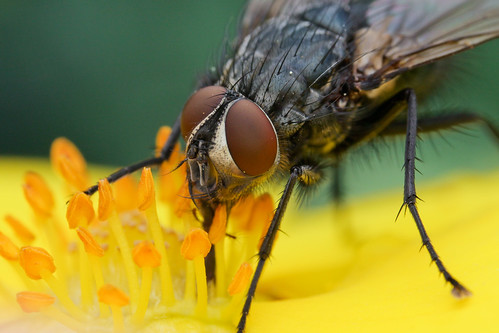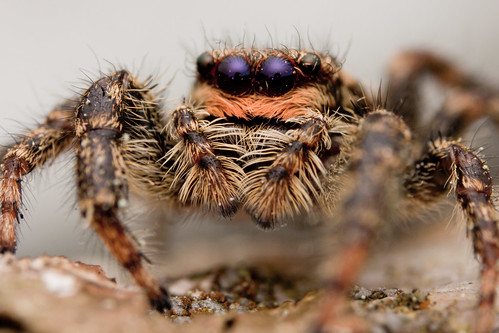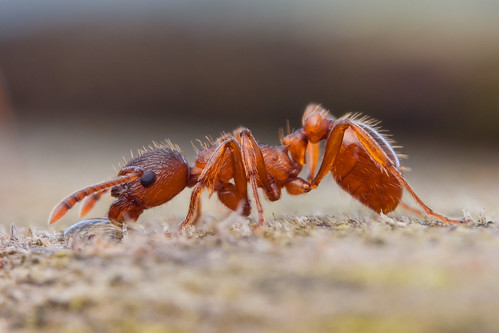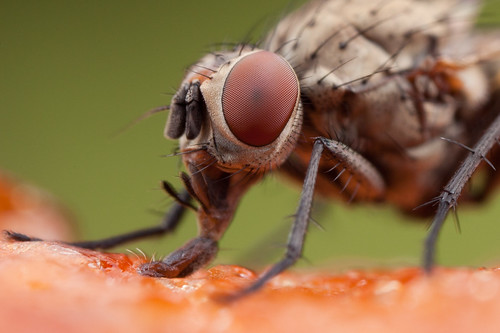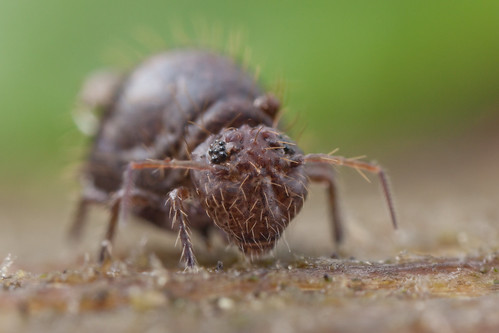That's a very elegant solution, John. The advantages for field work are very clear to me:
Even though the diffuser is small and portable, the illumination covers a wide angle because it is so close to the subject.
It can be rotated to obtain a better light direction for a particular subject.
It produces very natural lighting much like is seen in images captured under cloudy skies---as can be seen in the reflection in the eyes of the jumping spider. In fact, I like this effect much better than the full "wrap around" diffusers that pruduce a circular reflection with a "hole" in the center that can make eyes appear to have pupils. In my opinion, this concept would also be valuable for studio setups.
Inexpensive---materials essentially free, at least if you happen to like that particular brand of yoghurt!

I haven't seen that brand for sale in the US. So the might be able to do some business selling your empties on eBay!

Thanks for posting your creation. It gives me some good ideas.

